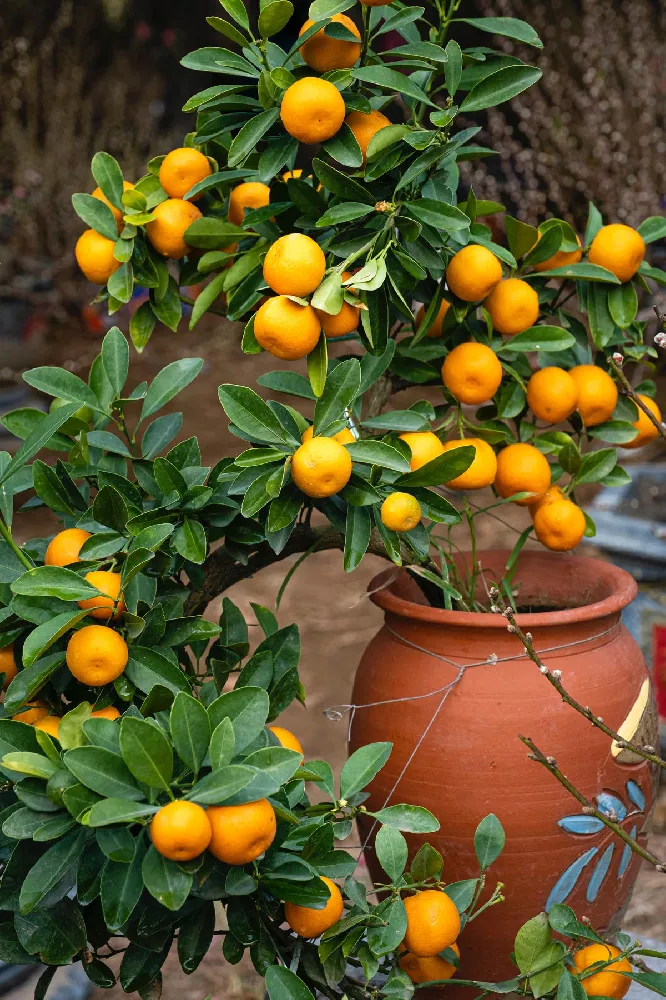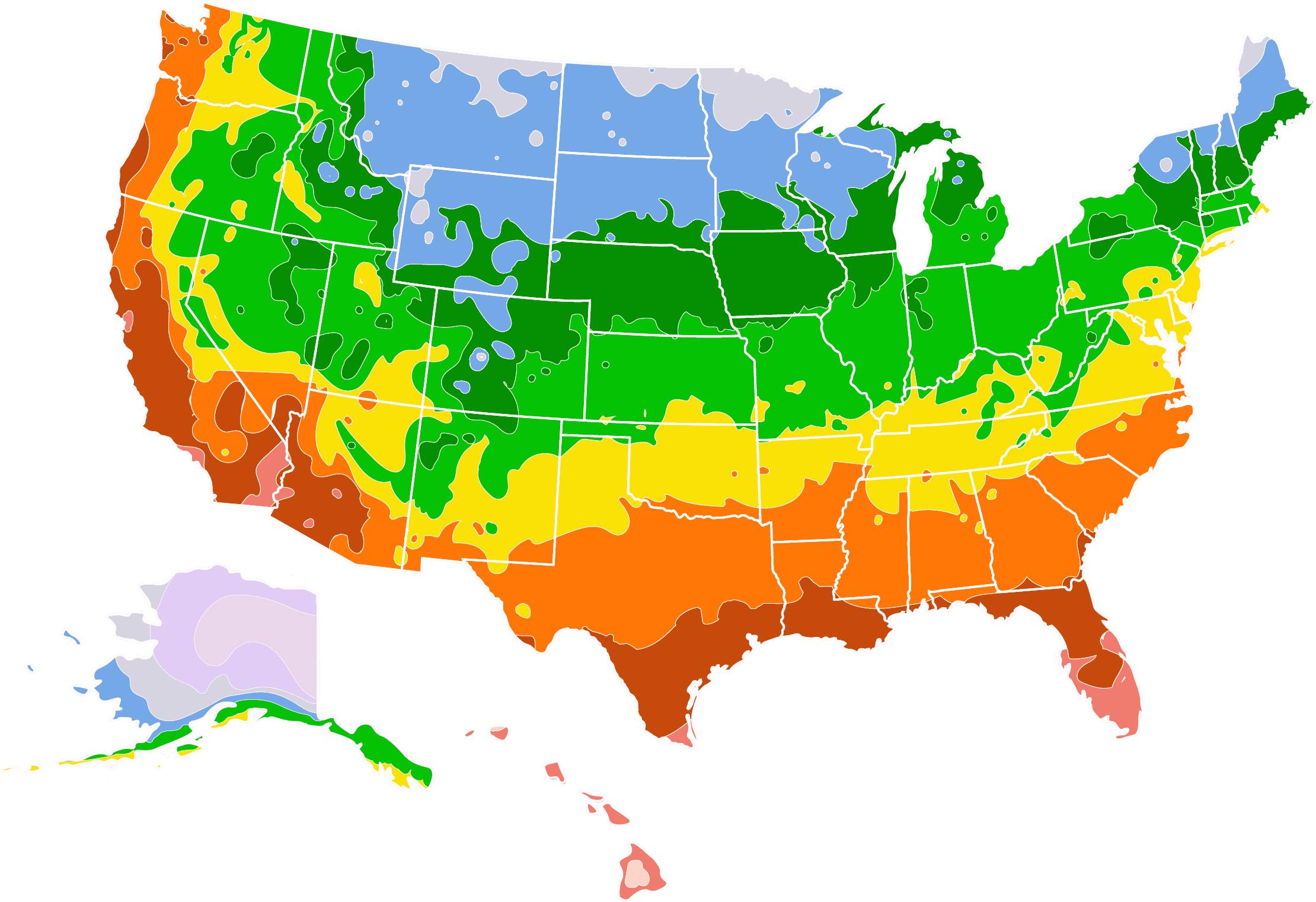- Home >
- Edible Plants >
- Owari Satsuma
Owari Satsuma for Sale - Buying & Growing Guide
The Owari satsuma tree, also called Citrus reticulata 'Owari,' is a dwarf tree species that can give you edible fruit and plenty of visual appeal throughout the growing season. These small trees grow mandarin oranges that are not just flavorful but also seedless and easy to peel. Additionally, before harvest, they add vibrant color to your landscape. The flowers of this plant are also attractive to both your garden visitors and the many pollinator species.
- White flowers and orange fruits provide color to the garden.
- Grows oranges that are seedless, tasty, and easy to peel.
- Attractive to many pollinators, including hummingbirds and many insects.
Enter your zip code to find nearby stores that may carry this plant.
Plant Care
Sunlight

Ideally, they should receive seven or more hours of sunlight per day.
Watering
Water multiple times per week during establishment. Reduce watering to once per week after establishment.
Fertilizing

Fertilize in the late winter and a few times throughout the growing season with a mix that contains equal amounts of nitrogen, phosphorus, and potassium.
Planting and Care
Planting instructions
When you plant an Owari satsuma tree, you should begin by digging a hole that is as deep as the root ball is tall and at least twice as wide as the root ball. The area in which you dig your hole should receive as much sun as possible to ensure the healthiest overall growth and fruit development. The soil in your planting area should have superb drainage as well. While the Owari satsuma tree needs plenty of regular water, it does not enjoy standing water, so soil drainage is a must.
Watering and nutrients
If you wish to develop the best possible fruits on your Owari satsuma tree, you’ll need to give it water continuously throughout its life. This plant enjoys deep waterings about twice per week when it is a young sapling. Once the tree has exhibited several years of healthy growth, you can reduce watering to once per week. Regular fertilization with a general-purpose mix or one made for citrus trees will also be beneficial. Consider fertilizing about three or four times per growing season.
Pollination
A single Owari satsuma tree will hold both male and female flowers on its branches, meaning that it is self-pollinating. Usually, pollination is not too difficult to achieve, as this plant welcomes many pollinator species to its flowers each spring. Insects and birds spread pollen as they feed on the nectar these flowers provide, which will eventually result in a healthy harvest later in the year. After pollination, it will take most of the growing season before the fruits arrive.
Pruning
Pruning an Owari satsuma tree is not a complex task. In fact, this tree often develops a favorable form without the need for you to do significant shaping. If you prune this species, you should do so just after the winter’s last frost and remove any part of the tree that is damaged or dying. At times, you may need to remove branches that grow low to the ground as they can detract from branches above that are more capable of bearing and supporting fruits.
Pests, diseases, and animals
There are a few disease issues common in Owari satsuma trees. Many of these problems arise when this tree experiences excessively high amounts of soil moisture, such as after significant rainfall. When excess moisture arrives, the Owari satsuma tree may encounter several types of rot. Mandarin rind disorder is another problem that causes distortion and discoloration to the fruits of this plant. Again, this problem often takes place after heavy rainfall. The prevalence of these rain-related issues points to the importance of soil drainage for an Owari satsuma tree.
Harvesting
The fruits of the Owari satsuma tree are usually ready for you to pick in the fall or the early winter. Unlike some other citrus fruits, Owari satsumas can become ripe and ready to eat while they still have some green marks on their exterior. However, if you want the ideal flavor and sweetness from this fruit, you should wait until it is entirely orange before you remove it from the branch. Be sure to harvest all of the fruits from this plant before any seasonal freezes can impact it.
Achieving maximum results
One branch on an Owari satsuma tree can hold many fruits, which can amount to significant weight. At times, that weight is enough to cause breakage. It’s wise to provide some structural support for your Owari satsuma tree just before fruit development to avoid this problem.
Also, the more sunlight that this tree receives, the better. As such, it can be helpful to locate this plant near a south-facing wall. Not only will the tree receive direct sunlight, but it may also pick up some light that reflects off of the wall.
FAQs
What are some other names for an Owari satsuma tree?
The Owari satsuma tree is one that is well worth planting in your garden. However, the several names related to this plant can cause some confusion for many gardeners. The Owari satsuma tree goes by the botanical name Citrus reticulata 'Owari.' It also goes by the common name Owari mandarin tree or simply satsuma tree. The fruits of this tree are also called mandarin oranges or tangerines.
When does the Owari satsuma tree bloom?
Owari satsuma trees typically bloom in the early spring with groups of small white flowers. These flowers attract many species, including hummingbirds, butterflies, and other insects. After these species conduct the pollination process, the tree will begin forming fruit. After several months of growth, the fruits will often be ready for harvest in the fall or early winter. However, harvest time can change significantly based on your regional climate.
How soon does an Owari satsuma tree bear fruit?
The length of time required for an Owari satsuma tree to bear fruit depends on the stage at which you plant it. If you choose to grow your tree from a seed, you'll need to wait significantly longer, often around eight years. However, if you plant an Owari satsuma tree sapling, it may take as little as three years for it to produce a harvest. Alternatively, some gardeners choose to graft their Owari satsuma trees to other tree species. This approach often leads to the fastest fruit production of all.
Compare Similar Products
Customer Reviews
 Overall good
Overall goodThe tree looked healthy and even came with 2 buds on it. Unfortunately, shipping took a toll on it and some of the leaves were damaged and the buds fell off the next day. The other tree, meyer lemon didnt get any damage and looks great. I hope my mandarin orange tree repairs and pulls through.
 Overall good
Overall goodThe tree looked healthy and even came with 2 buds on it. Unfortunately, shipping took a toll on it and some of the leaves were damaged and the buds fell off the next day. The other tree, meyer lemon didnt get any damage and looks great. I hope my mandarin orange tree repairs and pulls through.
 Healthy tree
Healthy treeHealthy tree
 best shipping prep for trees yet!
best shipping prep for trees yet!trees arrived in wonderful shape thanks to great care with packing.
 Cold shipping
Cold shippingFrom warranty to delivery was wonderful. Great experience with customer service and fast delivery. My citrus tree lost all its leaves after a couple of days due to cold delivery schedule. Going to wait til the summer to see if the tree will make it. Overall great company to buy from
 Omari Mandarin Orange
Omari Mandarin OrangePlant was packed well, the tree is healthy and sizable.
You can't add more Product Name - Product size to the cart.
OK








